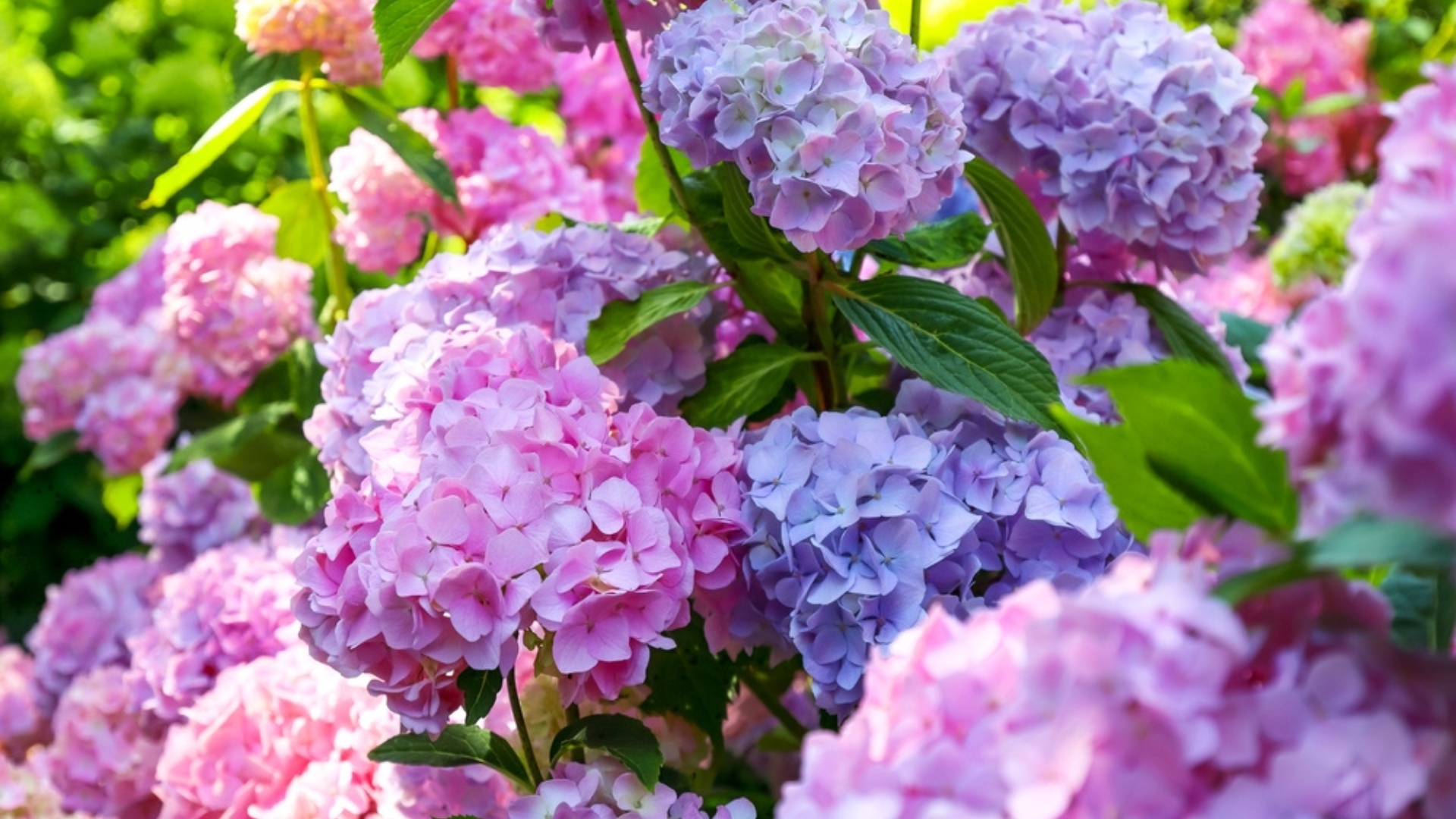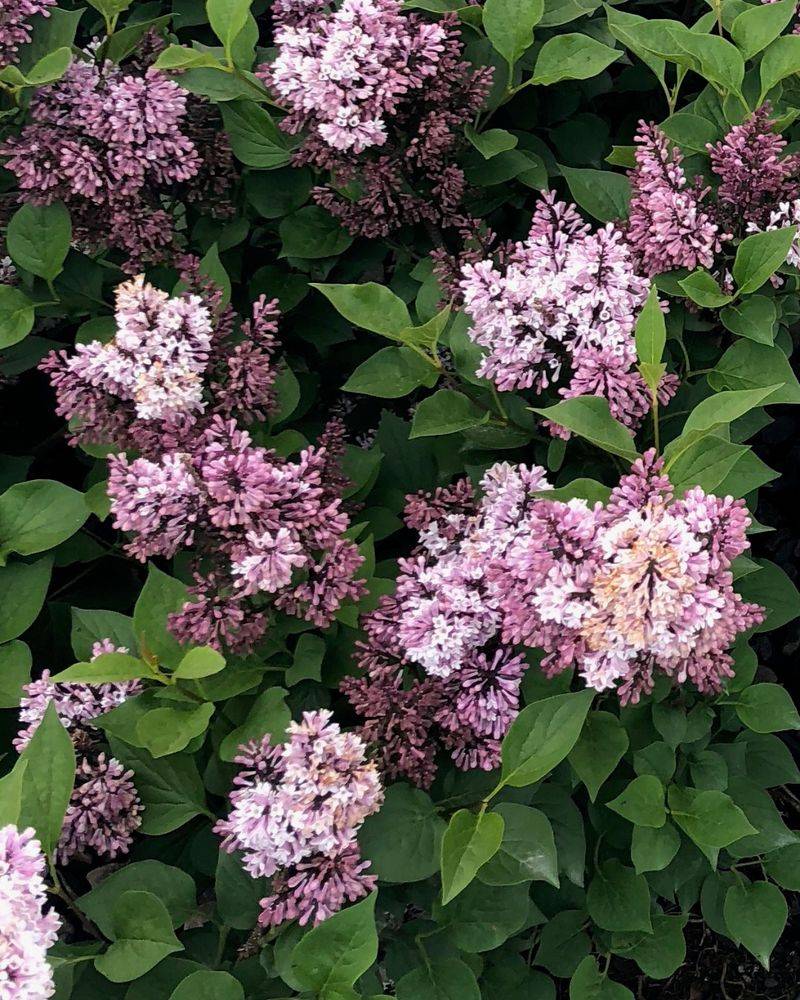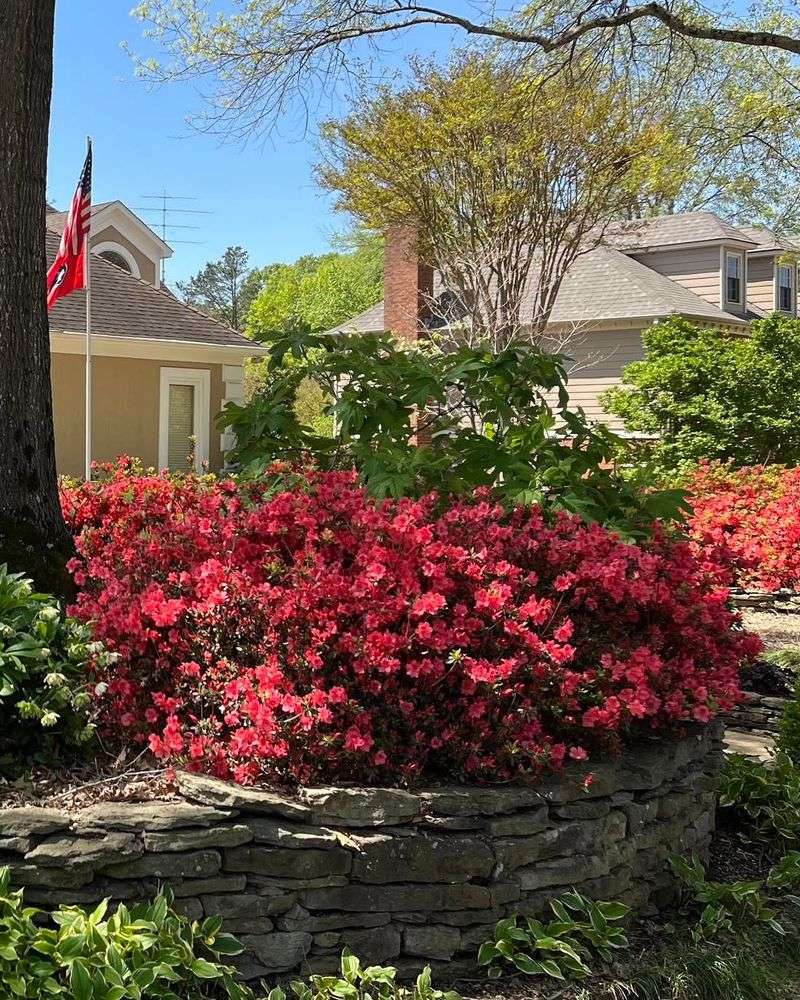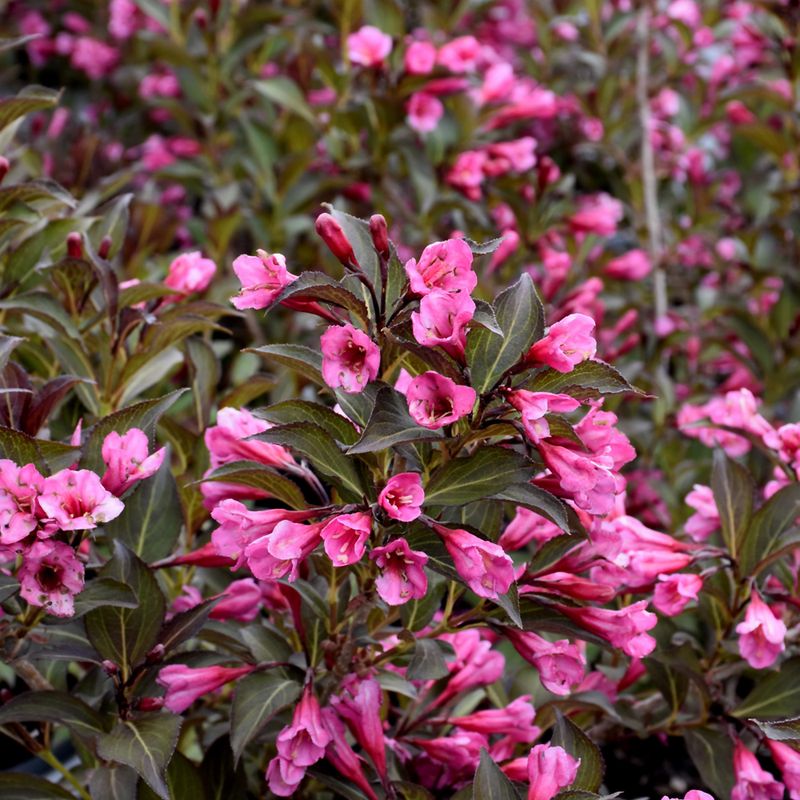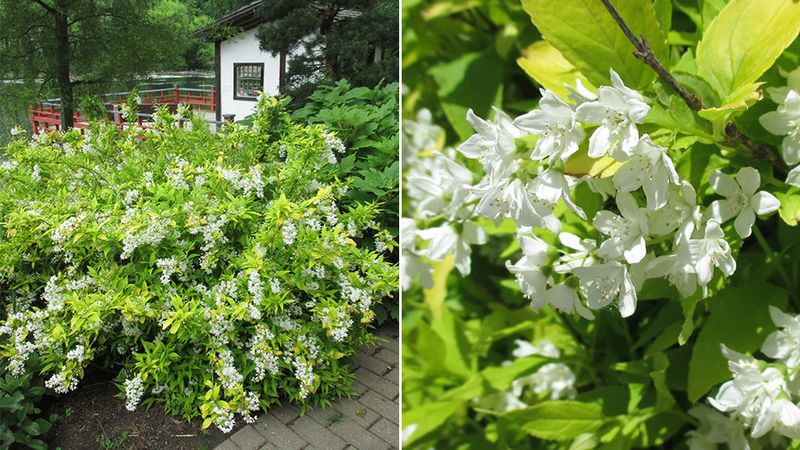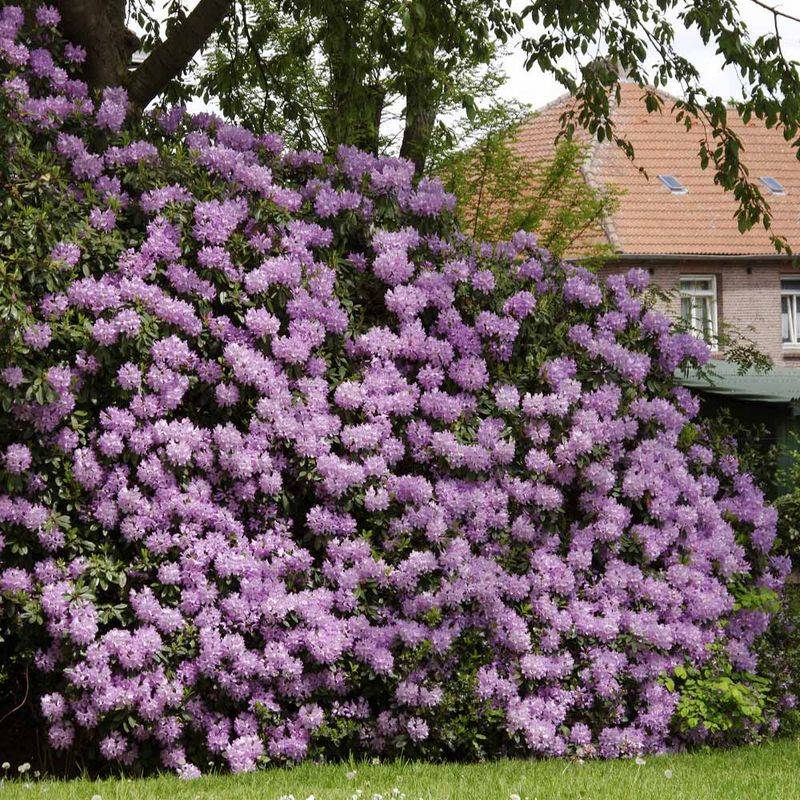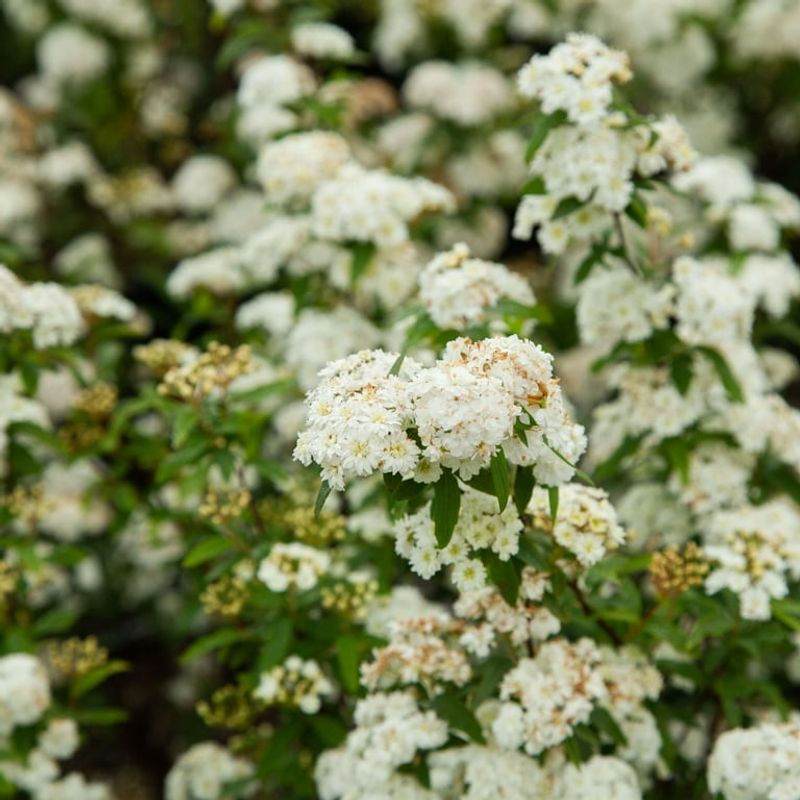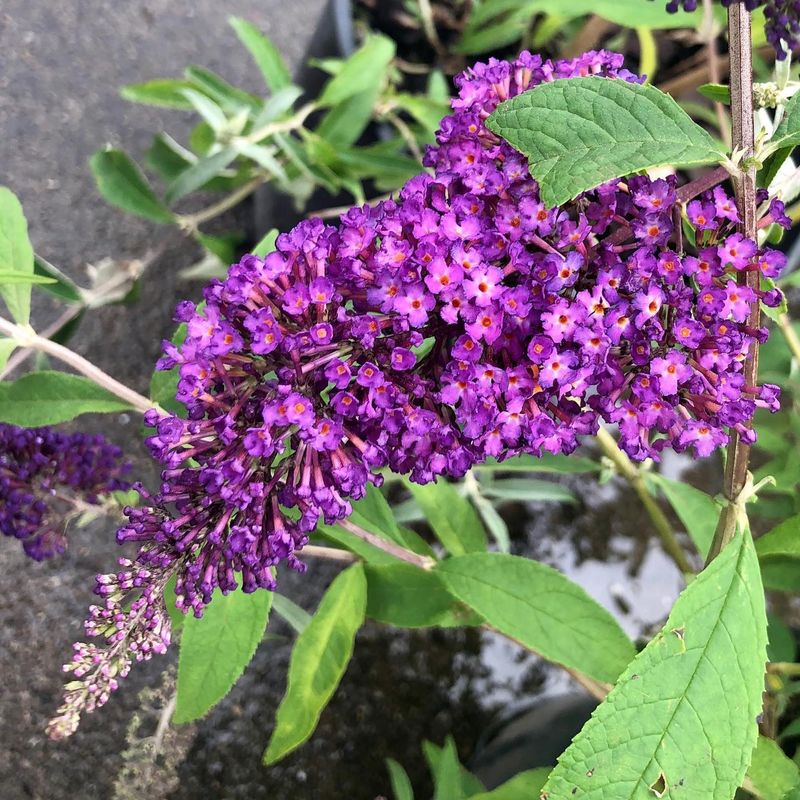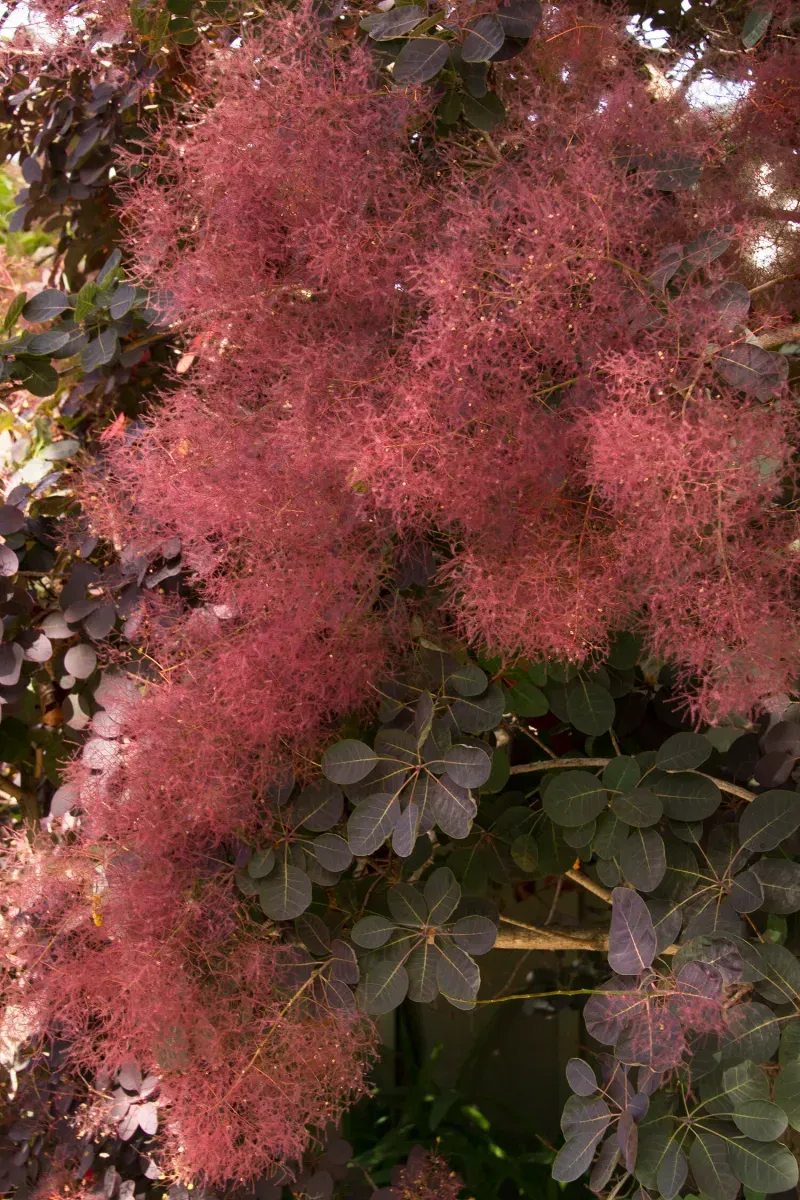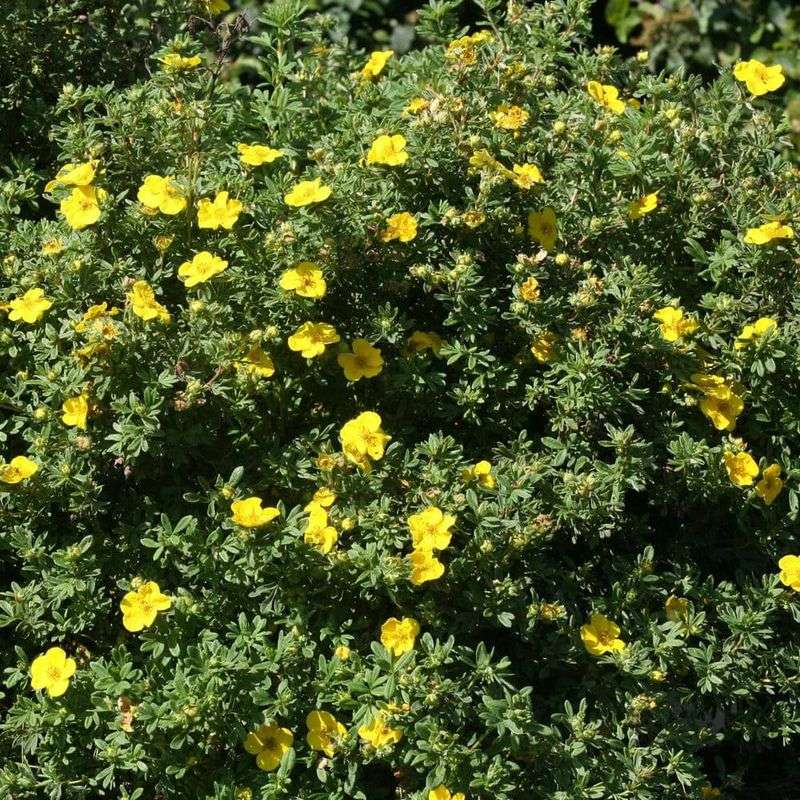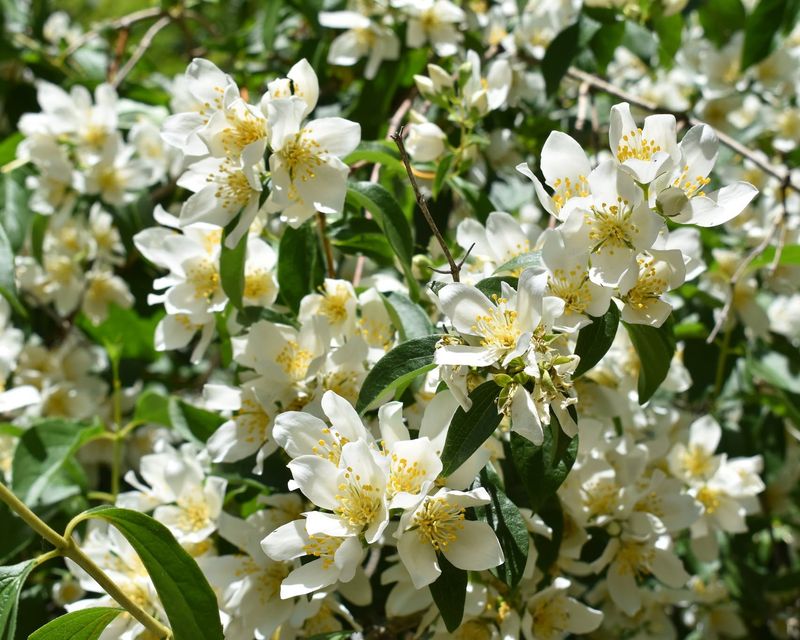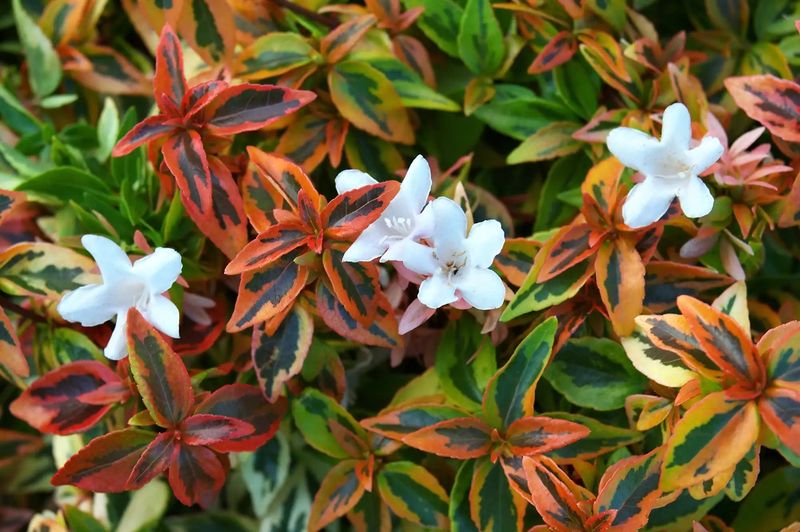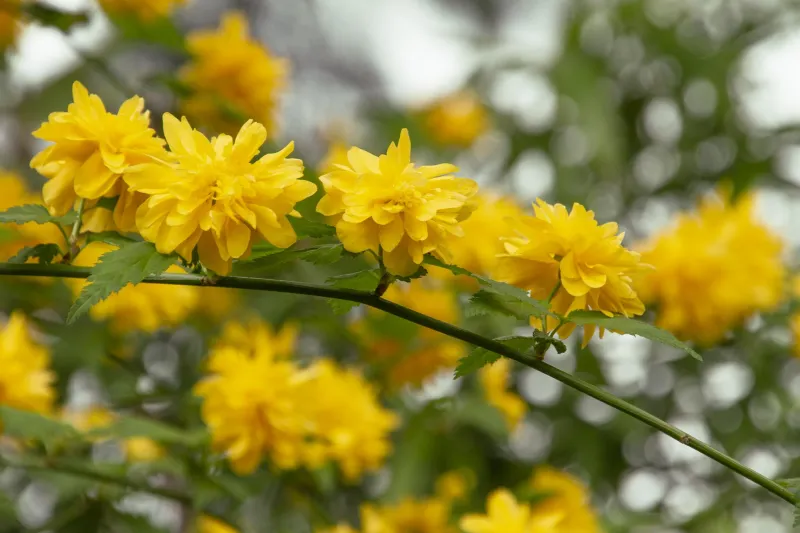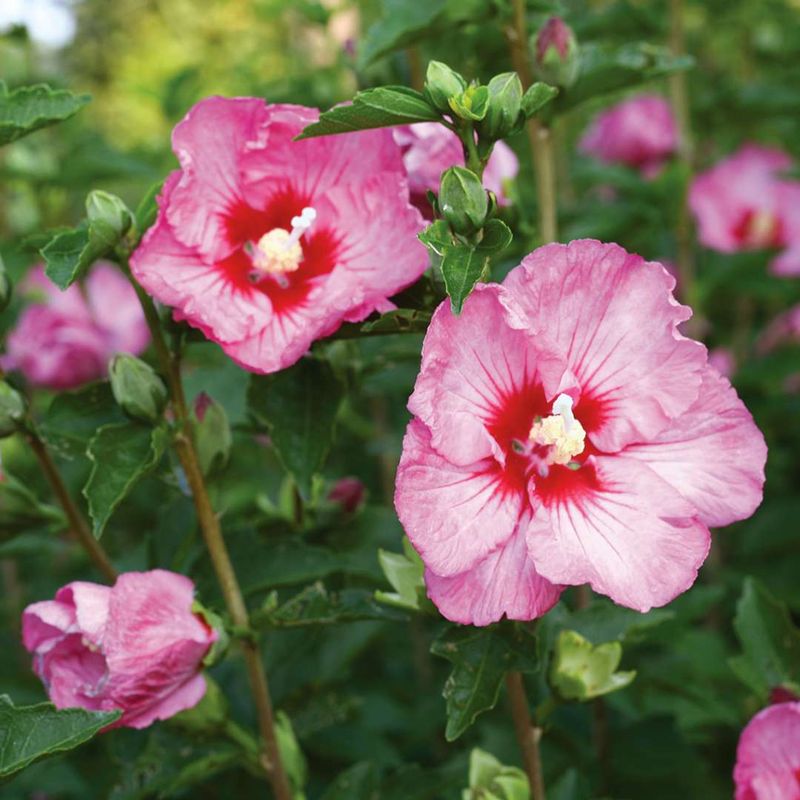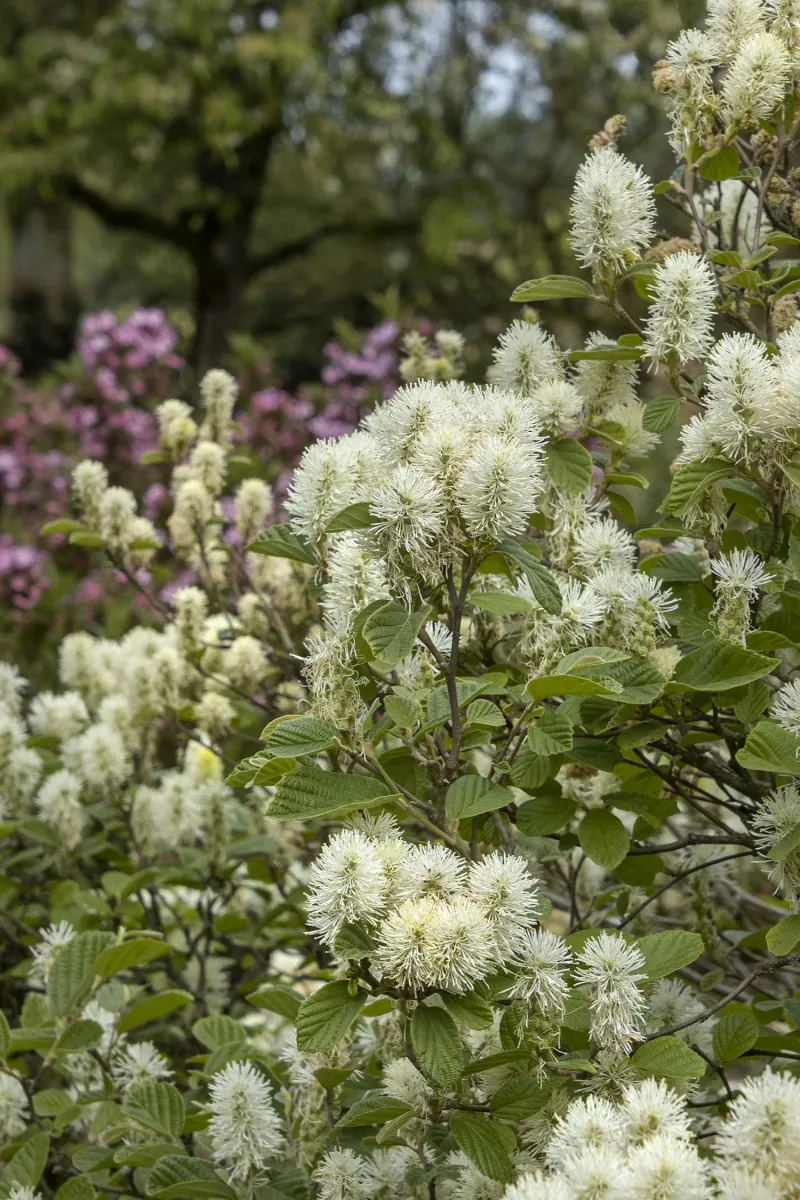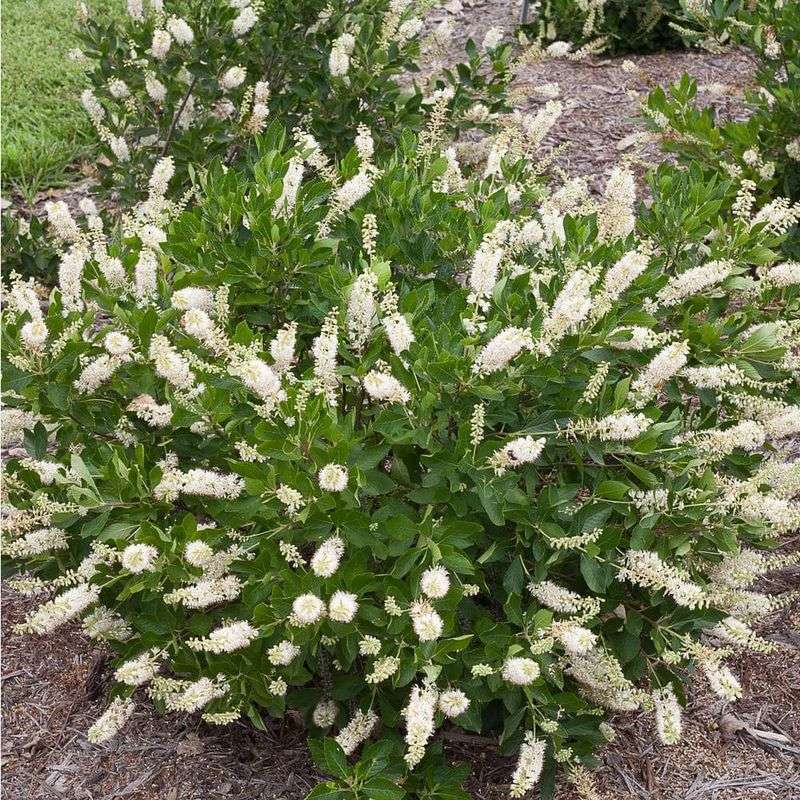Hydrangeas are garden favorites, but they’re not the only showstoppers for your landscape. Whether your soil isn’t right for hydrangeas or you simply want something different, plenty of stunning alternatives exist. These beautiful flowering plants offer similar visual impact while bringing their own unique colors, textures, and growing benefits to your garden beds.
1. Lush Lilac Shrubs
The intoxicating fragrance of lilacs can transform any garden into a springtime paradise. These hardy shrubs produce cone-shaped clusters of tiny blooms in shades of purple, pink, and white that attract butterflies and hummingbirds.
Lilacs thrive in full sun and well-drained soil, requiring minimal maintenance once established. Unlike finicky hydrangeas, they don’t need soil pH adjustments to maintain their color. With proper care, lilacs can live for decades, becoming more magnificent with age.
Their sweet scent makes them perfect near patios or windows where you can enjoy their perfume throughout their blooming season.
2. Vibrant Azalea Bushes
Bursting with color each spring, azaleas create a spectacular display that rivals any hydrangea. Their trumpet-shaped flowers blanket the entire shrub in vivid pinks, reds, purples, whites, or oranges.
Many varieties offer the bonus of being evergreen, providing year-round structure to your garden. Azaleas prefer partial shade and acidic soil, making them perfect for woodland gardens or areas under tall trees.
For maximum impact, plant several azaleas of the same color together to create a stunning mass of blooms. Dwarf varieties work beautifully in containers for patios and small spaces.
3. Dramatic Weigela Flowers
Weigela brings drama to the garden with its arching branches covered in trumpet-shaped blooms. The funnel-like flowers range from deep red to soft pink, attracting hummingbirds and beneficial pollinators throughout late spring.
Unlike hydrangeas that may need protection from afternoon sun, weigela thrives in full sunshine. Many newer varieties feature variegated or purple foliage, adding interest even when not in bloom. Maintenance couldn’t be simpler – just prune after flowering to maintain shape.
‘Wine and Roses’ varieties offer striking burgundy leaves that contrast beautifully with their pink flowers for a truly eye-catching display.
4. Showy Viburnum Clusters
Viburnum offers the same ball-shaped flower clusters as hydrangeas but with added benefits. The white or pink blooms appear in spring, followed by colorful berries that attract birds and provide winter interest.
Many varieties like Korean Spice Viburnum fill the air with a sweet cinnamon-clove fragrance that hydrangeas can’t match. Their multi-season appeal includes stunning fall foliage in shades of burgundy, orange, and purple.
Viburnums handle tough conditions that would make hydrangeas struggle, including clay soil and urban pollution. Plant them as specimens or in mixed borders for structure and year-round garden interest.
5. Delicate Deutzia Blossoms
Graceful and understated, deutzia shrubs create fountains of star-shaped white or pink flowers each spring. Their arching branches become completely covered in delicate blooms, creating a breathtaking display that rivals any hydrangea.
Deutzias are remarkably low-maintenance, tolerating poor soil and drought once established. Many varieties stay compact, making them perfect for smaller gardens where hydrangeas might overwhelm the space. The ‘Chardonnay Pearls’ variety offers chartreuse foliage that brightens shady spots even when not in bloom.
For maximum impact, plant deutzias where their arching habit can be appreciated, such as along borders or in cottage gardens.
6. Regal Rhododendrons
Rhododendrons create spectacular displays with their large clusters of trumpet-shaped blooms in every color imaginable. Their glossy, evergreen leaves provide year-round structure and beauty, unlike deciduous hydrangeas. Some varieties grow into small trees, creating dramatic focal points in woodland gardens.
Their magnificent flowers can range from delicate pastels to vibrant purples and reds, often with spotted throats or ruffled edges. Rhododendrons prefer acidic soil and dappled shade, making them perfect companions for pine trees.
For gardens with limited space, dwarf varieties like ‘PJM’ offer the same impressive flowers on a more manageable plant.
7. Elegant Spirea Cascades
Spirea brings graceful cascades of tiny flowers that create a frothy, delicate appearance in the garden. Spring-blooming varieties produce clusters of white flowers, while summer bloomers offer shades of pink and red. ‘Bridal Wreath’ spirea creates arching fountains of white that resemble a wedding bouquet.
For a more colorful option, ‘Magic Carpet’ offers bright pink flowers against golden foliage that turns russet in fall. Unlike fussy hydrangeas, spireas thrive in almost any soil and bounce back quickly from heavy pruning.
Their compact size makes them perfect for foundation plantings or as low hedges that won’t overtake smaller gardens.
8. Bold Butterfly Bush
Butterfly bushes earn their name by attracting clouds of colorful pollinators to their honey-scented blooms. The long, cone-shaped flower clusters come in purple, pink, white, and even orange, creating a dramatic display from summer until frost.
Unlike hydrangeas that bloom primarily in spring, butterfly bushes provide color during summer’s hottest months. Their silver-green foliage adds interesting texture even when not in bloom. Modern varieties like ‘Lo & Behold’ stay compact and non-invasive while blooming continuously.
Plant butterfly bushes in sunny spots where you can enjoy watching the parade of butterflies, hummingbirds, and bees they attract.
9. Stunning Smoke Bush
Smoke bush creates dramatic garden impact with its billowing plumes that resemble puffs of purple smoke hovering above the plant. These aren’t actually flowers but feathery seed structures that last for weeks, creating long-lasting visual interest.
For extra drama, varieties like ‘Royal Purple’ offer deep burgundy foliage that turns flame-red in autumn. Smoke bushes can grow into small trees, making them perfect specimen plants for corners or focal points. Unlike hydrangeas that need regular water, smoke bushes thrive in dry, challenging conditions once established.
Their drought tolerance makes them excellent choices for environmentally-friendly gardens in many climate zones.
10. Cheerful Potentilla Shrubs
Potentilla brightens gardens with cheerful buttercup-like flowers that bloom continuously from spring until frost. The five-petaled blooms come in sunny yellow, white, pink, or orange, creating months of color without deadheading.
These tough little shrubs laugh at poor soil and drought conditions that would make hydrangeas wilt. Their compact, rounded form stays neat without pruning, making them perfect for low-maintenance landscapes.
Potentilla’s ability to bloom in full, hot sun makes it valuable for those bright spots where hydrangeas would struggle. Plant them in rock gardens, along walkways, or as colorful low hedges for season-long garden cheer.
11. Fragrant Mock Orange
Mock orange fills early summer gardens with intoxicating citrus fragrance from its pure white blossoms. The four-petaled flowers resemble orange blossoms, giving this shrub its common name despite being unrelated to citrus trees.
Unlike hydrangeas, mock orange thrives in average soil without special amendments. The arching branches create a fountain-like form that works beautifully as a specimen or informal hedge.
For smaller gardens, compact varieties like ‘Snowbelle’ offer the same heavenly scent on plants that stay under four feet tall. Plant mock orange near windows or patios where its sweet perfume can be fully appreciated on warm summer evenings.
12. Enchanting Ninebark
Ninebark offers three-season interest with its colorful foliage, clusters of white or pink flowers, and exfoliating bark that reveals multiple layers.
Varieties like ‘Diabolo’ feature deep purple leaves that provide dramatic contrast to its white flower clusters. The peeling bark creates winter interest long after hydrangeas have gone dormant. Newer cultivars offer foliage in gold, copper, or burgundy, making them standout specimens even when not in bloom.
Ninebark’s native heritage makes it exceptionally hardy and adaptable to various soil conditions. Its ability to thrive in both wet and dry locations makes it a versatile choice for problem areas where other shrubs struggle.
13. Colorful Abelia Shrubs
Abelia delights with its arching branches covered in small, trumpet-shaped flowers from summer until fall. The fragrant blooms attract butterflies and hummingbirds while providing months of garden interest.
Unlike hydrangeas that may need regular pruning, abelias naturally maintain a graceful rounded form. Variegated varieties like ‘Kaleidoscope’ offer multi-colored foliage that changes with the seasons, progressing from green and gold to orange and red.
Many abelias are semi-evergreen, providing winter structure in milder climates. Their adaptability to different soil types and resistance to deer browsing makes them valuable additions to gardens plagued by hungry wildlife.
14. Dramatic Japanese Kerria
Kerria lights up partly shaded areas with brilliant golden-yellow flowers that resemble small roses. The bright blooms appear in spring against zigzagging bright green stems that provide winter interest when plants are dormant. Unlike hydrangeas that may need soil amendments, kerria adapts to almost any soil condition including clay.
The arching branches create a fountain-like form that works beautifully along woodland edges or shady borders. Double-flowered varieties like ‘Pleniflora’ offer pom-pom blooms that resemble small yellow chrysanthemums.
Kerria’s ability to bloom in shade makes it invaluable for brightening dark corners where other flowering shrubs would fail.
15. Romantic Rose of Sharon
Rose of Sharon brings tropical-looking hibiscus flowers to the summer garden when many other shrubs have finished blooming. The large, colorful blooms appear in shades of white, pink, lavender, or blue, often with contrasting centers.
Unlike spring-blooming hydrangeas, Rose of Sharon flowers from midsummer until frost, providing months of color. Many varieties feature double flowers that resemble small roses, creating a romantic cottage garden feel. These versatile shrubs can be trained as small trees or pruned into formal hedges.
Their ability to bloom in hot, humid conditions makes them perfect for southern gardens where other flowering shrubs might struggle during summer’s heat.
16. Spectacular Snowberry
Snowberry creates winter magic with clusters of plump white berries that resemble miniature snowballs against bare branches. The berries often persist through winter, providing food for birds and visual interest during the dormant season.
Pink bell-shaped flowers appear in spring, though they’re more subtle than the showier berries. Snowberry’s ability to thrive in dry shade makes it perfect for those challenging spots under trees where hydrangeas might struggle.
Native to North America, snowberry supports local wildlife while requiring minimal care. Its naturally arching form works beautifully in naturalistic plantings or as an informal hedge along property boundaries.
17. Fascinating Fothergilla
Fothergilla treats gardeners to bottlebrush-like white flowers that emerge before the leaves in early spring, filling the air with honey fragrance. The unusual blooms look like fluffy white cotton swabs standing upright along the branches.
The real show comes in autumn when the leaves turn spectacular shades of yellow, orange, and red—often all on the same plant. This multi-season appeal makes fothergilla more versatile than many hydrangeas. Dwarf varieties work beautifully in small gardens or mixed borders.
Native to the southeastern United States, fothergilla supports local ecosystems while creating year-round garden interest with minimal maintenance requirements.
18. Elegant Clethra Spires
Clethra, commonly called summersweet, produces fragrant spires of tiny white or pink flowers that perfume the garden in late summer. The vanilla-scented blooms attract butterflies and bees when many other shrubs have finished flowering.
Unlike some hydrangeas that need frequent watering, clethra naturally grows in wet areas and thrives in heavy soils where other plants might rot. The golden fall foliage extends seasonal interest well into autumn.
As a native North American plant, clethra supports local wildlife while requiring minimal care. Its compact form and tolerance of wet conditions make it perfect for rain gardens or those troublesome low spots where water collects after storms.

